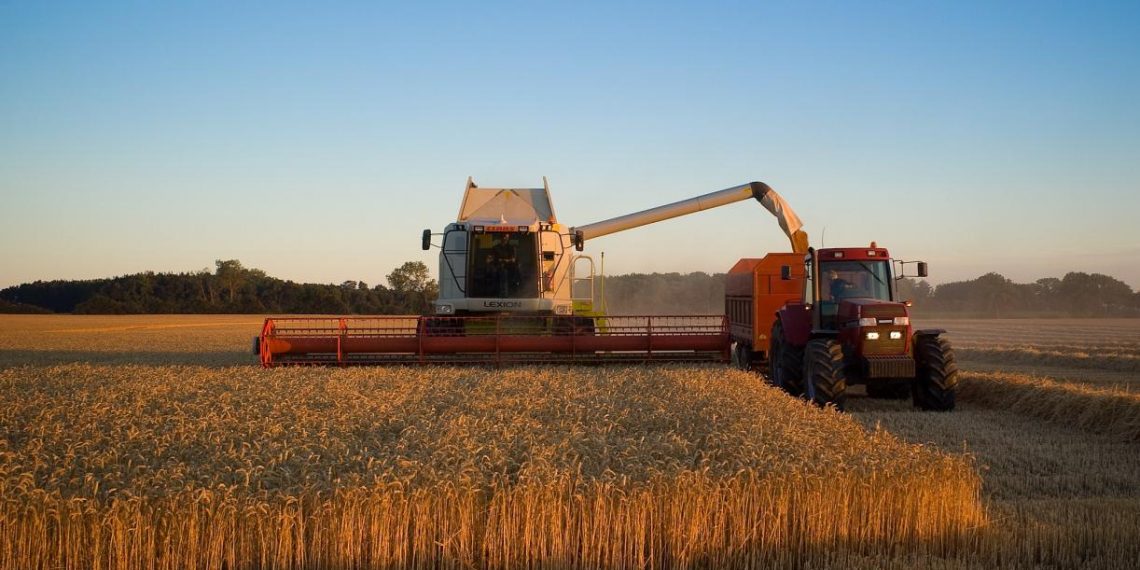Agriculture and related land-use change generate one-quarter of the world’s greenhouse gas (GHG) emissions. Producing the food the world will likely need by 2050 using today’s technologies would triple GHG emissions while destroying most of the planet’s remaining tropical and temperate forests. At the same time, global emissions need to drop to net-zero by mid-century to prevent the worst climate impacts.
In the World Resources Report: Creating a Sustainable Food Future, WRI set forth a five-course “menu of solutions” for feeding nearly 10 billion people by 2050 while greatly reducing GHG emissions, stopping conversion of natural ecosystems such as forests and advancing economic development,
But the food system, while global, is made up of agricultural practices and policies within countries. As countries ramp up action to address climate change, many are asking a critical question: How can we transform our agricultural system into a climate-friendly one?
The European Union aims to cut its GHG emissions 55% by 2030, while in the United States, President Biden recently committed to reduce emissions 50% by 2030. Neither of these interim goals are likely to be achieved without reductions in emissions from agriculture.
The United States and other European countries practice advanced forms of agriculture, of which Denmark is a good example. Denmark produces mostly milk and pork, most of which it exports. Its major agricultural organization, the Danish Agriculture and Food Council, has declared a highly ambitious goal to become carbon neutral by 2050. In light of this ambition, WRI applied its global menu of solutions to Denmark to identify which items are most suitable for enabling the country to achieve its carbon-neutrality target. We present our results in the report, A Pathway to Carbon Neutral Agriculture in Denmark.
The report’s lessons can inform not only Denmark’s agricultural future, but also that of other advanced agricultural economies. Here are five noteworthy lessons:
1. Nations can’t reduce agricultural GHG emissions by producing less food — that would just shift emissions to other countries. Rather, the world needs to produce more food, but on the same (or less) amount of land as today.
Globally, we project food demand will increase 45% from 2017 to 2050, even if beef consumption in Western and other large meat-consuming countries drops greatly.
This sobering reality has one big implication: To produce 45% more food without clearing more forests and other habitats, farmers around the world must produce on average 45% more food per hectare. It is not enough just to produce the same amount of food as today on the same land in 2050, because that just shifts the burden of productivity gains to farmers in other countries. To be “land-area carbon neutral” — that is, to avoid contributing to the conversion of forests or other important ecosystems into agricultural land (extensification) — each country’s farms should strive to increase output per hectare.
2. Countries with high rates of milk and meat consumption should reduce their consumption, while efficiently increasing their production.
Denmark has some of the highest consumption of milk and meat in the world. Its governments, food companies, restaurants and other institutions should greatly encourage efforts to reduce that consumption. That’s particularly true for beef, which generates 5-9 times the GHG emissions of milk and pork. Government food procurement is one place to start.
Yet reducing consumption alone isn’t enough, because even with great reductions in meat and dairy consumption in wealthier countries, global milk and meat consumption still will increase. Two-thirds of the global population in 2050 will live in countries where each person on average today consumes only around one-quarter of the meat and milk consumed per person in the United States and Europe. If the rest of the world’s consumption grows just to half of current American and European levels, overall meat and milk consumption will rise greatly.
That’s why even though Danes (and people from other Western OECD countries) should consume less, our report, perhaps counterintuitively, concludes Denmark should increase production of meat and milk to maintain its share of rising global food supply. Just producing less meat and milk in Denmark will mainly just cause other countries to produce that meat, probably less sustainably and with more emissions.
The food challenge is the same as for cars. The world needs to drive less, but it also needs to make carbon-neutral cars. You’re unlikely to persuade people to drive less just by closing the factories in one country, because consumers simply will buy cars from another.
Denmark’s most valuable role globally is to show how it is possible to produce dairy and pork with far fewer GHG emissions and greater feed efficiency—and do so in ways that are better for animal welfare while addressing other health concerns with meat and milk production.
3. Promising measures might greatly reduce agricultural production emissions, but the world must invest in research and creative techniques to continuously improve them.
The agricultural sector is where the energy sector was 25 years ago: It had promising technologies, but required investments in wind and solar power, batteries and other technologies to bring down costs and improve effectiveness enough to prove renewables could be the backbone of future energy supplies.
Similarly, promising technologies exist to rein in agricultural emissions. They include feed additives to reduce cattle methane, and ways of replacing some crops with protein-rich grasses and pressing them to obtain more and better feeds. Other options include using microbes to help grain crops fix nitrogen, which saves fertilizer and reduces emissions of nitrous oxide, a powerful GHG. Another option is to breed wheat to exploit a natural capacity found in some wild wheat varieties that inhibits the formation of nitrous oxide in soils.
Some of the methods are pretty simple. For example, our research found Denmark can probably cut half of its methane emissions from manure just be removing it from the barn daily — a common practice in Sweden. To reduce those emissions further, farmers can then modestly acidify the stored manure or even just add a bit of sulfate to control the methane.
Overall, we identified paths that could reduce Danish agricultural production emissions by 80%. That was true even while focusing only on technologies for which there is some real evidence today that they may become cheap enough to be widely adopted or even profitable.
To realize these potential reductions, Denmark and the world require a better system for advancing technology than just responding to research proposals. The model should be the system employed by the United States in the 1960s to get to the moon in eight years, or by Apple when it wanted to build an iPhone but needed to invent new screens, materials, batteries and software. They did not just invite research proposals. Instead, they established technical teams accountable for finding the needed innovations, worked with outside researchers and provided the money to pursue the best ideas quickly.
4. Promising opportunities also exist to boost food production on less land, but they require development.
Although the task is challenging, our report also outlines a series of measures for Denmark to meet the 45%-more-food target while restoring hundreds of thousands of hectares of marginal domestic farmland back into peatlands and forests. It will require higher crop yields, in part by exploiting breeding opportunities and more efficiently feeding livestock, which must be done humanely. It also means creative new uses of cropland, such as high-yielding grasses pressed into protein feeds and fodder, or shifting some land from producing barley for animal feed grains to producing higher-yielding beets for feed.
Some of the measures to reduce emissions, such as feed additives to reduce methane in cows’ guts or measures that reduce nitrous oxide, show promise that they also can boost yields. For example, a 50-year-old line of studies shows big crop yield gains can occur when soils are managed to maintain more nitrogen in the form of ammonium to balance the nitrogen in the form of nitrate, a change that also will reduce emissions of nitrous oxide.
This producing-more-on-less-land burden also applies to the soybeans Denmark imports from Latin America. To be land-area carbon neutral, Denmark should work with its suppliers to explore pongomia, a tree that potentially produces oilseeds at far higher yields than soybeans. Denmark also can improve grazing systems in Latin America to triple output or more by allowing soybeans to expand into existing, low-productivity pastures so that Denmark’s demand for soybeans does not push agriculture into forests.
5. Increased food production must be linked with progress on reducing emissions and restoring forests and peatlands.
Without mitigating production emissions and without restoring forests and peatlands, producing more food on Denmark’s farms would present a major burden on the rest of the country.
Without progress in mitigating agricultural emissions, agriculture would generate 80% of Denmark’s emissions by 2035-2040 while providing only1.5% of Danish GDP. Even though good Danish agriculture has benefits for the world, Denmark today has almost no natural forests. For Danish people to embrace producing more food for the world, these agricultural changes need to do their share to reduce GHG emissions and improve the environment in other ways, too.
Rewetting peatlands and restoring thousands of hectares of Danish forests would stop the vast losses of carbon from peatlands and remove enough carbon dioxide from the atmosphere to balance out the remaining 20% of Denmark’s agricultural production emissions. It also would vastly improve wildlife habitats, while some other agriculture climate-mitigation measures would reduce nitrogen pollution, which harms fish and marine life.
Similarly, in Latin America, a major feed supplier to Denmark, efforts to boost yields can and should be coupled with efforts to protect and restore forests.
By linking progress on emissions mitigation and land restoration to increases in food production, Denmark has the opportunity to create a social compact for its people — ensuring sufficient food production, viable livelihoods for farmers, a healthy landscape, and vibrant natural habitats that benefit all.
Creating a Climate-friendly Food System
It is worth mentioning that the pathways we outline have unknowns, just like the pathways for mitigating energy emissions. Not every technology will fully work. Other technologies may emerge. What our report provides is a starting map to be revised over time.
Although producing food imposes large environmental costs, the world almost certainly needs much more food by mid-century. Farmers in advanced agricultural countries can be a big part of the solution to feeding the planet while mitigating climate change by doing what they do best: increasing production efficiency, advancing technologies, and innovating to address the challenges of climate change.



